Travel
Haarlem Travel Guide
Published
3 years agoon
By
Kenta Fox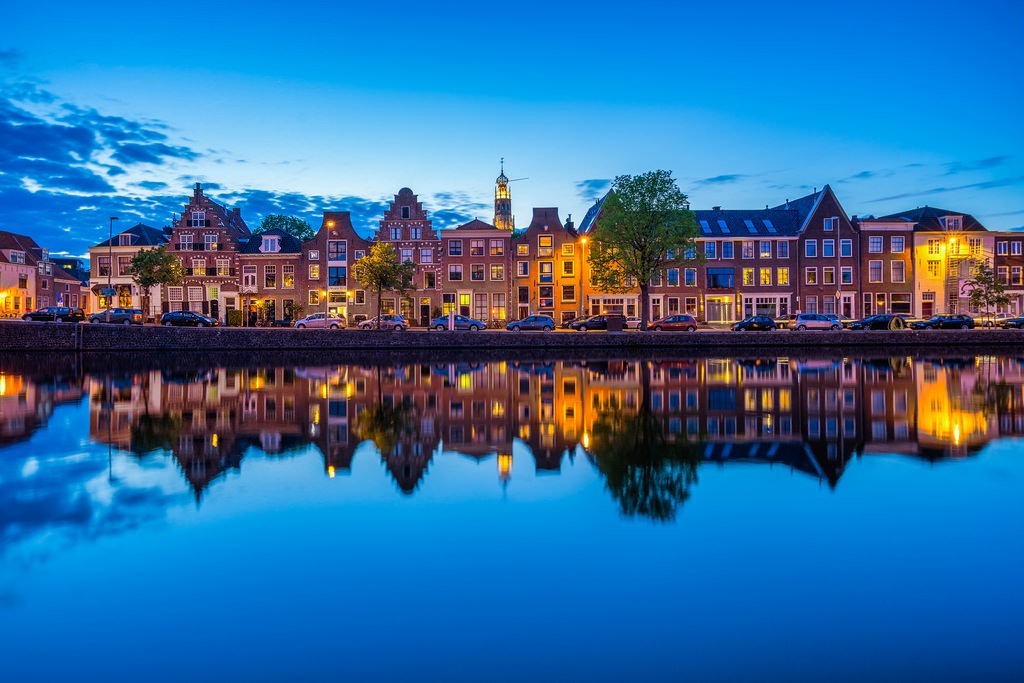
Most Popular Travel Destination in Haarlem
Haarlem, the capital of the Noord-Holland province, is located between Amsterdam and the North Sea. Just seven kilometers from the coast on the banks of the small River Spaarne (the source of the city’s nickname “Spaarnestad”), this typical Dutch town is located on the northern border of Bollenstreek, a famous onion growing region that produces tulips, hyacinths and crocuses.
Haarlem has a long and rich history. From the 11th to the 13th centuries, it was the seat of the Dutch Counts and received its municipal charter in 1245, making it the second oldest city in the heart of the Netherlands.
In the 17th century, the city was the scene of major artistic events and the residence of many painters such as Frans Hals, Jacob van Ruisdael, Philips Wouwerman, and Adriaen van Ostade. This rich cultural heritage survives to this day and the Frans Hals Museum, one of the most visited places in Haarlem, attracts many visitors.
To learn more about these and other top attractions, be sure to read our list of the best things to do in Haarlem.
1- St. Visit Bavo Church: Grote Kerk (St.-Bavokerk)
Located in the heart of the Grote Markt, Haarlem’s main town square, St. Bavo Church or Grote Kerk (St.-Bavokerk) is the city’s most striking building. This late Gothic cruciform basilica is 140 meters tall and has a slender 40-metre tower. It started with the choir building in the 14th century, with the transepts bing added later in the mid-15th century.
Highlights of the interior include opulent pre-Reformation furnishings, including the choir and pulpit from 1499, beautifully carved choir stalls from 1512, and a brass choir curtain from 1509. Three models hang in front of the former chapel of the Sailors’ Guild. While the piers below the tower and in the choir are covered with 15th and 16th century paintings depicting symbols of the Apostles, guilds and church doctrine.
But the real star is the church’s famous Müller Organ. Considered one of the largest instruments of this kind in the world for its tone and decoration, this magnificent instrument was made by Christian Müller in 1738 and consists of three manuals, 68 stops and 5,000 pipes, the largest of which is 10 meters long and 10 meters in diameter. 40 centimeters.
2- Explore the Frans Hals Museum
Frans Hals Museum, founded in 1913 in one of Haarlem’s most important historical buildings, the 17th-century Old Men’s Lodges (Oude Mannenhuis), is one of the leading art galleries in the Netherlands. Spanning two locations, “Hof” and “Hal”, the museum focuses on the work of the Haarlem Academy, a group of artists founded in the 1600s by Frans Hals.
Today, this impressive museum is home to some of the world’s largest works of Hals, including five major pieces of civil protection. These large canvases showcase his genius for capturing a moment and bringing each face to life.
Other highlights include work on sniper guilds, companies of volunteers who will come together to form a civilian militia from the city’s wealthier citizens. The collection also includes 17th century portraits and landscapes alongside a collection of modern and contemporary art, including paintings, sculptures, textiles, ceramics and graphic arts by artists in and around Haarlem.
A large collection of contemporary art and photography can also be viewed. English-language guided tours are available, and there is also a cafe and shop on site.
3- Wander around the Grote Markt and the Old Town
Haarlem’s historic market square (Grote Markt) is home to many of the city’s main attractions, including the Town Hall and the Grote Kerk, as well as home to a host of other spectacular sights, making it one of the most visited . popular things to do
Highlights include the Brinkmann-Passage with its shops and restaurants, and the Hoofdwacht, one of the oldest buildings in Haarlem, notable for its gabled roof dating from 1650.
But the real gem here is the Vleeshal or Meat Hall. Built in 1603 to house both the municipal slaughterhouse and the butchers’ guild, it is considered the finest work of the Northern Renaissance movement and is perfectly preserved as an annex to the Frans Hals Museum.
Be sure to pop into Vleeshal’s basement as well to get a glimpse of the Haarlem Archaeological Museum (Arkeologisch Museum Haarlem), one of the best free things to do in Haarlem. Exhibits include artifacts (including ancient human remains) unearthed during local archaeological excavations.
Also noteworthy is the Vishal or Fish Hall. Also occupied by the Frans Hals Museum, this building is notable for its red and white facade adorned with beautifully ornamented walls. You can learn more about this fascinating neighborhood and its history on a two-hour Private Walking Tour with a local guide.
4- Old Town Hall
Opposite the Grote Kerk is the old Town Hall (Stadhuis), the oldest parts of which date back to 1250. Newer features such as the exterior staircase, north wing, and Neoclassical façade were added in the 1600s.
The tower, Haarlem’s greatest landmark and emblem, was rebuilt in 1913 according to original plans (the original bell still rings at the beginning of council meetings). The interior is also interesting and contains many fine paintings, relics and memorabilia along with fine wood carvings. Guided tours are available.
5- Teylers Museum
The oldest museum in the Netherlands, the Teylers Museum was founded in 1778 after its namesake, a wealthy cloth and silk merchant, bequeathed his wealth to build an establishment that showcases the advancement of the arts and sciences. One of only four museums of this kind in Europe. The museum contains an extensive art collection with numerous drawings and paintings by early Dutch masters.
Other notable works include Michelangelo’s figure studies for the Sistine Chapel; Raphael’s drawings; and extraordinary collections of scientific instruments, minerals and fossils. Of particular interest is the elegant Oval Room, designed as a place for research and study, and where scientific experiments were once held.
English guided tours are available. Also worth seeing is the adjacent Weighing House (Waag), built in 1598 and in use until 1915.

6- Take a Walking Tour of Amsterdam Poort
One of the most beautiful corners of Haarlem is located around the Bakenessergracht, home to some of the oldest and most magnificent buildings in the city. Particularly beautiful is the Hofje van Bakenes, a lovely little courtyard dating from 1395 and famous for its cryptic rhyme (see the sign above the entrance).
At the end of the Bakenessergracht is the Binnen Spaarne River, which crosses an attractive old suspension bridge and offers great views of Amsterdamse Poort, Haarlem’s only surviving city gate. It was built in the early 1400s and is a national monument, surrounded by two octagonal towers and two round towers, as well as the remains of the old city walls.
7- See Historic Old Houses in Proveniershuis
Located on the Grote Houtstraat, Haarlem’s main shopping street, Proveniershuis is a collection of beautiful old buildings from the 17th and 18th centuries that should really be included on your list of places to visit. Historically, this attractive area has housed a cross-section of townspeople, from nuns and priests to merchants and retired guild members.
Today, it’s a fabulous area to wander around as you soak up the atmosphere and explore the alleyways that spill into the city’s many quiet nooks and crannies. Highlights include seeing the many former almshouses where poorer citizens once lived.
8- St. Enjoy a Recital at Bavo Cathedral
Saint Bavo Roman Catholic Cathedral is a relatively new three-aisled cruciform basilica built between 1895 and 1906. Approximately 100 meters long, 42 meters wide and 60 meters high, it is a fine example of the transition from traditional to traditional in church architecture. more modern designs.
Highlights include the Cathedral Treasury and St. There is a holy relic containing the remains of Bavo. Other notable features are the fine stained glass, as well as sculptures and paintings by well-known Dutch artists.
Also notable is the Willibrord Organ, built in 1923 with four manuals and 75 stops. Be sure to check the schedule for periodic organ recitals.
9- See the Tomb of William of Orange in Nieuwe Kerk
Haarlem’s New Church (Nieuwe Kerk) was built between 1645 and 1649, with an elegant Renaissance tower and a clock from 1795. Inside the church, be sure to notice the magnificent Baroque tomb of William of Orange, made in England by Hendrick and Pieter de Keyser. 1614.
Also important are the tombs of the painters Jacob van Ruisdael and Philips Wouwerman in the adjacent churchyard.
10- Learn the Lessons of War at the 10-Ten Boom Museum
Despite being one of the smallest tourist attractions in the city, the Ten Boom Museum is worth a stop when you visit Haarlem. Dedicated to the life of writer Corrie Ten Boom, it resembles the Anne Frank House in Amsterdam and portrays a typical small house that played an important role in the hideout of Jews persecuted during the Second World War.
Located in his family-owned watch shop, the museum’s focus is Ten Boom’s bestseller, The Hiding Place, which vividly describes the dangers involved in providing a safe haven for refugees. Tragically, the family emerged and many were killed before the war was over. English guided tours are available.
11- Take a De Adriaan Windmill Tour
Located on the banks of the Spaarne river, De Adriaan Wiindmill (Molen de Adriaan) is a faithful replica of the original 1778 mill built on the foundations of an old defensive tower. The original, which turned the rifle into a powder used to make cement and then used to grind tobacco and then corn, burned down in 1932.
On a 45-minute tour you can learn more about the history of the mill and Haarlem, and see how a windmill works. You can enjoy beautiful views of the river and the city from the viewing platform.

12-Brederode Castle
Although now largely in ruins, Brederode Castle (Kasteel Brederode) offers an excellent glimpse into life in the Netherlands in the 13th century. Considered the country’s first national monument, this monument is just a few minutes’ drive (or bus) from downtown Haarlem in Santpoort-Zuid.
There’s no shortage of fun things to see and do here, especially for those traveling with kids. In addition to its extraordinarily beautiful environment; There is even a moat and a bridge on the land. Staff and volunteers regularly host period-themed costumed events such as markets and musical performances.
These same “living history” actors also provide fascinating guided tours as characters. Frequent exhibits designed specifically for children include Playmobil toy displays.
Travel
Exploring Amsterdam’s Best Laptop-Friendly Cafés for Digital Nomads
Published
1 year agoon
24/08/2023By
Berry Fox
Amsterdam, renowned for its picturesque canals and vibrant cultural scene, has become a haven for digital nomads seeking a balance between work and exploration.
The city’s charming coffee culture, coupled with its tech-savvy ambiance, has given rise to a plethora of laptop-friendly cafés that cater to the needs of remote workers. This article serves as a guide to some of the best laptop-friendly cafés in Amsterdam, where you can sip your favorite brew while staying productive.
Exploring Amsterdam’s Best Laptop-Friendly Cafés for Digital Nomads
1. Coffee & Coconuts
Nestled in a former cinema, Coffee & Coconuts is a spacious and aesthetically pleasing café that offers a tranquil atmosphere for those seeking a productive work environment. With three levels of seating options, including cozy corners and communal tables, you can easily find your perfect spot. The café’s ample power outlets, free Wi-Fi, and a menu featuring an array of coffee options, fresh juices, and healthy dishes make it a top choice for digital nomads.

2. The Hoxton
Located along the Herengracht canal, The Hoxton is a stylish boutique hotel that boasts a welcoming lobby turned café, perfect for remote work. The ambiance blends vintage décor with modern amenities, offering a comfortable space to settle in with your laptop. The Hoxton provides complimentary Wi-Fi, a selection of delicious pastries, and a range of beverages from expertly brewed coffee to herbal teas.

3. Lot Sixty One Coffee Roasters
For the true coffee connoisseur, Lot Sixty One Coffee Roasters is a must-visit. This cozy café is celebrated for its exceptional coffee brewed from beans roasted on-site. The café’s minimalist design and serene ambiance create an ideal setting for focused work. The absence of distracting background noise further enhances its suitability for remote work. While here, savor a cup of their artisanal coffee and perhaps engage in a quick chat with the knowledgeable baristas.

4. Scandinavian Embassy
A haven for lovers of Scandinavian design and quality coffee, Scandinavian Embassy offers a sophisticated space for digital nomads. The café’s specialty coffee is crafted with precision, and the menu features an assortment of delectable treats. The minimalist interior, characterized by clean lines and natural materials, fosters a serene atmosphere, while the friendly staff ensures your caffeine fix is accompanied by a productive work session.

5. De Wasserette
De Wasserette, with its rustic charm and inviting atmosphere, seamlessly blends into Amsterdam’s cozy ambiance. Known for its artisanal bread and pastries, the café provides an inviting environment for those seeking a laptop-friendly space. The wooden tables, ample natural light, and the aroma of freshly baked goods set the stage for a productive work session, complemented by their selection of coffees and teas.

Amsterdam’s coffee culture and digital-friendly mindset have given rise to an array of cafés where remote workers can find solace while pursuing their professional endeavors. From the trendy Coffee & Coconuts to the coffee perfectionists’ haven, Lot Sixty One Coffee Roasters, each café offers a unique experience. So, whether you’re a digital nomad in search of an inspirational workspace or a traveler looking to soak up Amsterdam’s charm while catching up on work, these laptop-friendly cafés have got you covered. Embrace the blend of productivity and leisure that Amsterdam’s coffee scene has to offer.
Entertainment
Finding a Hotel for Pride 2023 in Amsterdam
Published
1 year agoon
23/07/2023By
Kenta Fox
Amsterdam Pride is one of the most anticipated and colorful events of the year, attracting LGBTQ+ travelers and allies from all corners of the world.
As you prepare for an unforgettable experience during Pride 2023 in Amsterdam, finding the right hotel is crucial to ensuring a comfortable and enjoyable stay.
1. Book Early, Secure Your Spot Amsterdam Pride is an incredibly popular event, and hotels in and around the city tend to fill up quickly. To secure the best accommodations at reasonable rates, it’s essential to book your hotel as early as possible. Keep an eye on the official Pride website and other event-related platforms for announcements and special deals on accommodations.
2. Choose the Right Location Amsterdam offers a diverse range of neighborhoods, each with its unique charm and atmosphere. For the most convenient and immersive experience during Pride 2023, consider staying in areas that are close to the event venues and parade route. The city center and the Le Marais neighborhood (also known as the Gay Village) are popular choices for LGBTQ+ travelers, as they are in close proximity to major Pride events and gay-friendly establishments.
3. Gay-Friendly Hotels: Embrace Inclusivity For an extra-special Pride experience, opt for a gay-friendly hotel that actively supports and welcomes LGBTQ+ guests. These hotels often go the extra mile to create a warm and accepting environment, allowing you to feel comfortable and free to be yourself during your stay. Look for hotels with LGBTQ+ symbols or statements of inclusivity on their websites.
4. Budget Considerations Amsterdam offers a wide range of accommodations, catering to various budgets. Before making your reservation, set a budget for your stay and explore options that align with it. Keep in mind that prices for hotels during Pride might be higher than usual due to the high demand. If you’re looking to save some money, consider staying slightly further from the city center or sharing a room with friends.
5. Amenities and Facilities Think about the amenities and facilities that are important to you during your stay. Some hotels offer on-site restaurants, bars, gyms, or wellness facilities, which can enhance your overall experience. Additionally, consider the type of room you prefer – whether it’s a standard room, a suite, or a shared dormitory for a more budget-friendly option.
6. Read Reviews and Ratings Before finalizing your hotel choice, read reviews and ratings from previous guests. Websites like TripAdvisor, Booking.com, and Google Reviews can provide valuable insights into the quality of service, cleanliness, and overall guest experience. Pay attention to feedback from LGBTQ+ travelers, as they may highlight specific aspects that are important to you as well.
7. Inquire about Pride-Related Events Some hotels may organize special Pride-themed events or parties for their guests during the festival. Don’t hesitate to inquire with the hotel’s staff about any planned activities or gatherings. This can be a great way to connect with fellow Pride-goers and add an extra layer of enjoyment to your stay.
8. Be Mindful of Cancellation Policies While it’s essential to book early, be mindful of the hotel’s cancellation policy. Life can be unpredictable, and you may need to adjust your plans closer to the event date. Choose a hotel with a flexible cancellation policy, so you have the option to make changes if necessary.
Good luck!
AMSTERDAMFOX.com
Travel
A Month-by-Month Guide to Amsterdam’s Weather
Published
1 year agoon
14/07/2023By
Berry Fox
Amsterdam, the capital city of the Netherlands, is known for its artistic heritage, beautiful canal systems, and narrow houses. It is a city that’s rich in history and culture, but its weather is something every traveler should understand to make the most of their visit. This article offers a comprehensive month-by-month guide to Amsterdam’s weather.
A Month-by-Month Guide to Amsterdam’s Weather
January
January is the coldest month in Amsterdam, with average temperatures ranging from 1°C (34°F) to 5°C (41°F). Snowfall is relatively rare but can occur. Pack warm clothing, as wind chill can make temperatures feel colder.
February
February sees similar temperatures to January, albeit slightly warmer towards the end of the month. Amsterdam in February is still cold with frequent rainfall. Wrap up warm, and don’t forget your raincoat.
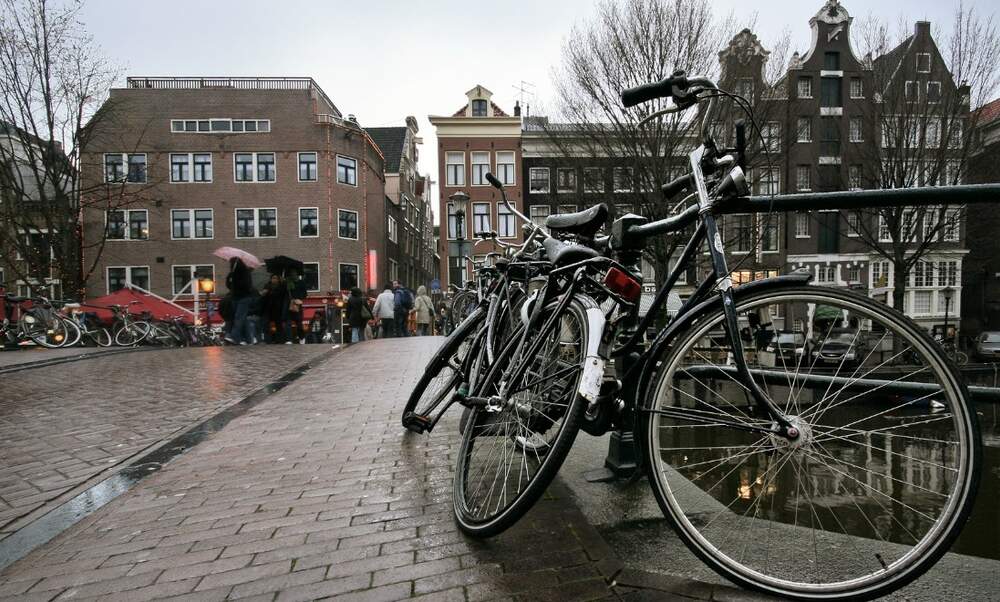
March
As spring arrives, temperatures in March range from 3°C (37°F) to 9°C (48°F). Rain is less frequent than in winter months, and the city starts to brighten up as flowers begin to bloom.
April
April sees temperatures ranging from 5°C (41°F) to 12°C (54°F). It’s a popular month to visit due to the blooming of tulips, a quintessential Dutch symbol.
May
May is the start of the peak season in Amsterdam. The weather is warmer, with temperatures ranging from 8°C (46°F) to 17°C (63°F). The city is filled with greenery, and rainfall is less frequent than previous months.
June
June in Amsterdam is typically mild and pleasant, with average temperatures between 11°C (52°F) and 19°C (66°F). It’s the beginning of summer, and the city comes alive with various outdoor activities.
July
July is the warmest month, with temperatures ranging from 13°C (55°F) to 21°C (70°F). Despite the warmth, it’s a good idea to pack a light jacket as evenings can be cooler.
August
August weather is similar to July, with temperatures between 13°C (55°F) and 21°C (70°F). Rainfall is slightly higher, but this doesn’t deter outdoor events and activities.
September
September marks the start of autumn. Temperatures range from 11°C (52°F) to 19°C (66°F). The city starts to see more rainfall, but there are still plenty of warm, sunny days to enjoy.
October
October in Amsterdam gets chillier and wetter, with temperatures between 8°C (46°F) to 14°C (57°F). The fall foliage creates beautiful scenery across the city.
November
November is quite cold, with average temperatures between 5°C (41°F) and 9°C (48°F). Rainfall is quite frequent, so make sure to pack a good raincoat and warm clothing.
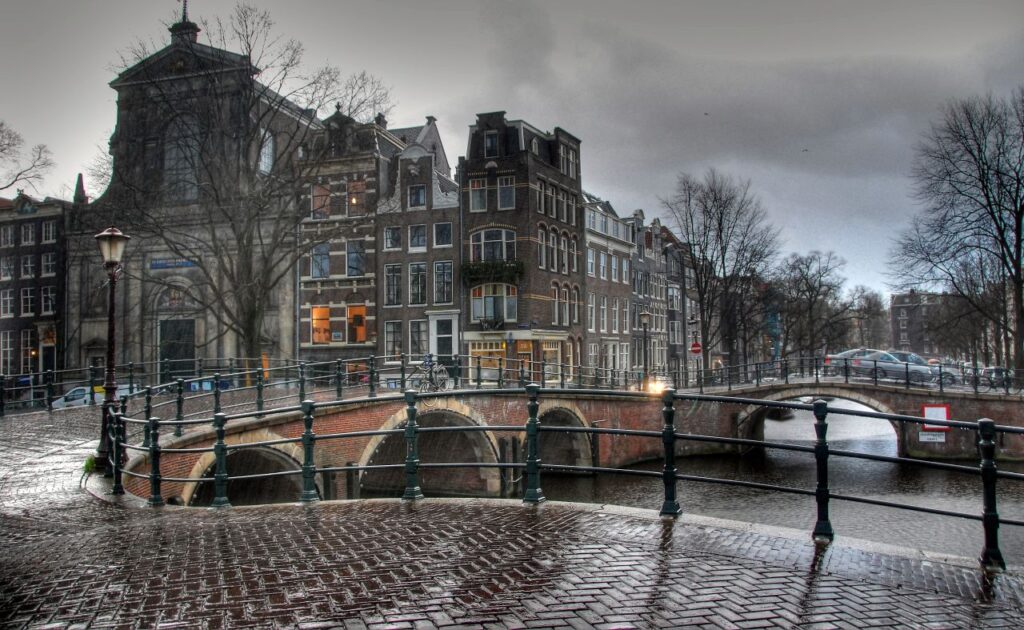
December
December is a festive month in Amsterdam despite the cold weather. With temperatures ranging from 3°C (37°F) to 7°C (45°F), the city is adorned with Christmas lights and markets, creating a magical atmosphere.
This guide provides a broad overview of what to expect when visiting Amsterdam. Remember, however, that these are average temperatures, and actual weather conditions can vary. Always check the forecast before your visit and pack accordingly.
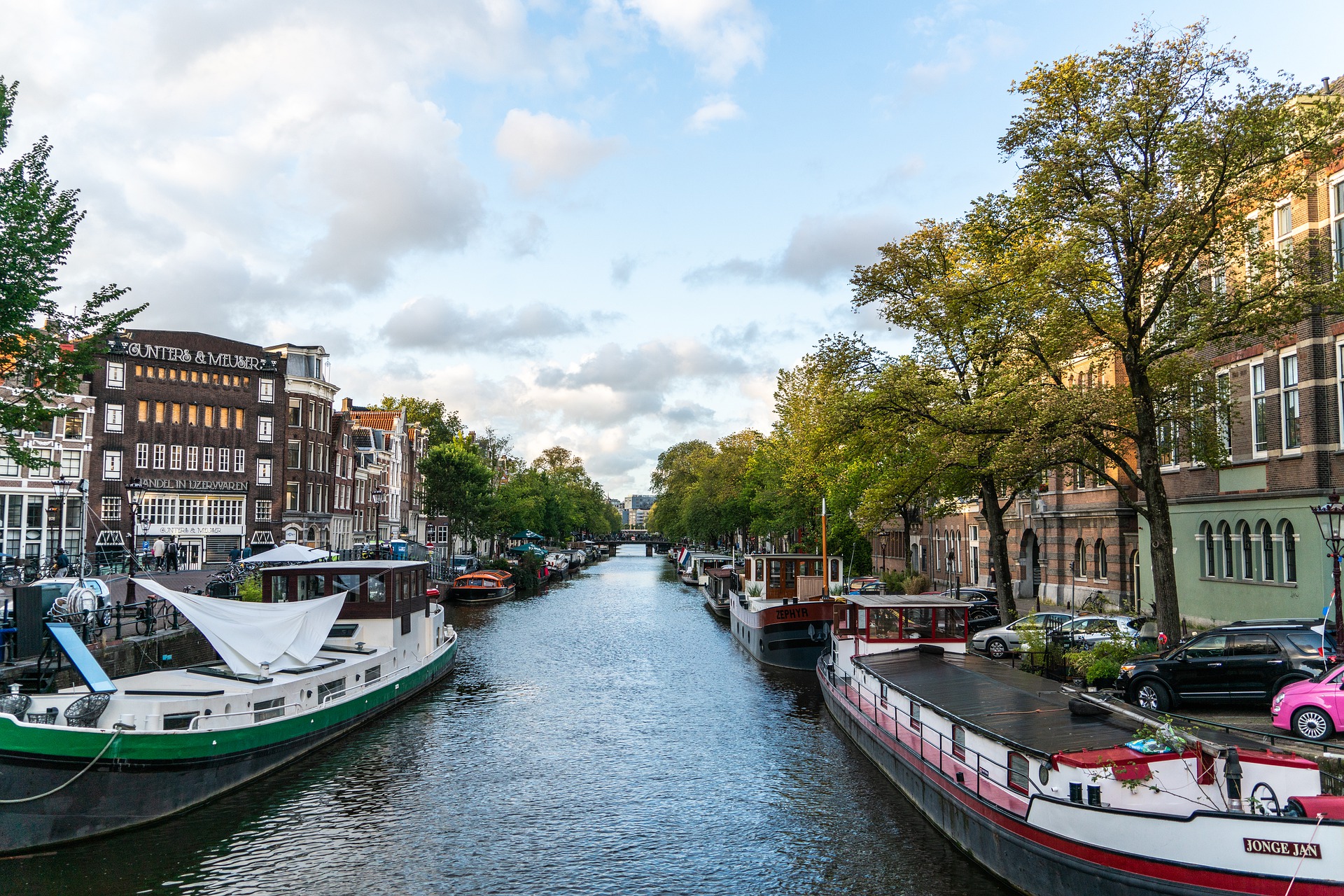
When planning a summer holiday to Amsterdam, understanding the weather patterns is crucial to make the most of your visit. This article outlines what to expect from Amsterdam weather in July, the perfect month for soaking up the Dutch sun and exploring this fascinating city’s unique attractions.
Amsterdam, the capital of the Netherlands, is a must-visit destination on many travelers’ European itineraries. Famous for its scenic canals, artistic heritage, and vibrant nightlife, the city becomes even more enticing in July when the weather is at its summer’s best.
Typically, Amsterdam in July experiences warm and pleasant temperatures. This time of the year is usually the warmest in this Dutch capital. Daytime temperatures typically range around 22°C (72°F), making it perfect for sightseeing, strolling around the charming city streets, or partaking in the numerous outdoor activities Amsterdam offers. Night-time temperatures are generally comfortable as well, averaging around 15°C (59°F).
Though, bear in mind that Amsterdam weather in July can sometimes surprise with sudden heatwaves, with temperatures soaring up to 30°C (86°F). Therefore, packing light, breathable clothing is essential for your Amsterdam summer trip.
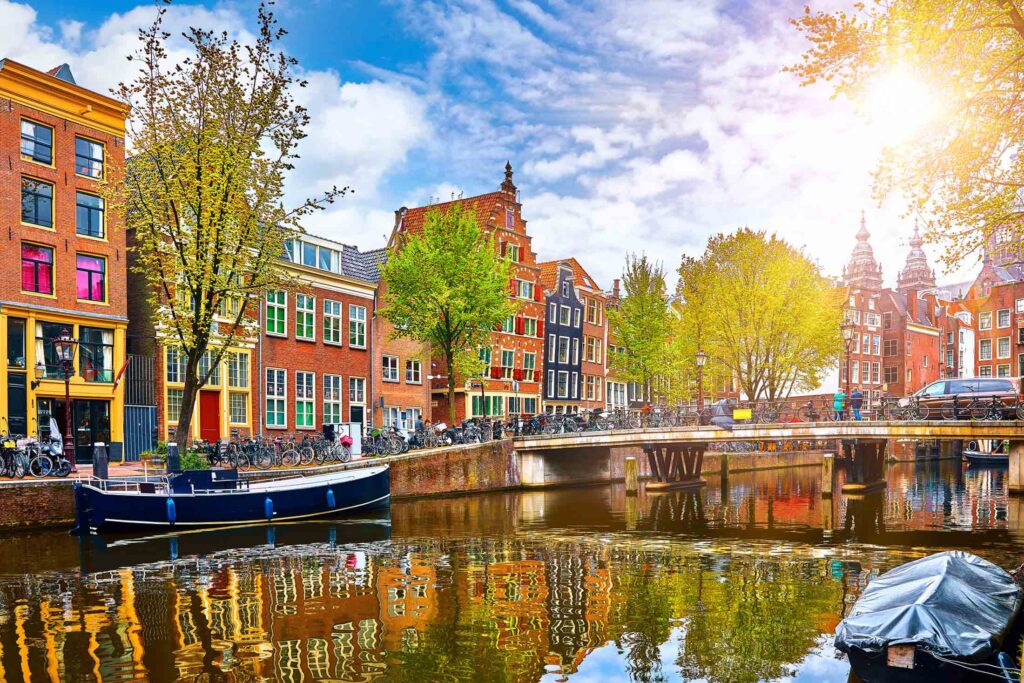
Rainfall in Amsterdam in July
Summer in Amsterdam isn’t just about sunshine and warmth. July falls within the Atlantic Hurricane Season, which implies a possibility of unpredictable weather patterns and sudden showers. On average, the city receives about 63mm of rain throughout July. This brings about a unique charm to the city, and it’s also why packing an umbrella or a light raincoat for your visit to Amsterdam in July can be a smart move.
Packing Essentials for July in Amsterdam
Daylight Hours in July in Amsterdam
One key benefit of visiting Amsterdam in July is the long daylight hours. Coming off the summer solstice in June, July enjoys up to 16 hours of daylight. This means you have ample time to visit landmarks like the Rijksmuseum, Anne Frank House, and the buzzing Jordaan district. It also provides the perfect setting for Amsterdam’s summer festivals and open-air events that happen in July.
In summary, the weather in Amsterdam in July provides a warm, inviting atmosphere for tourists, despite the occasional rain shower. The generous daylight hours offer ample opportunities for sightseeing and participating in outdoor events. Therefore, for anyone planning a trip to Europe, don’t miss out on Amsterdam in July, where you can experience pleasant summer weather and the city’s vibrant culture at its best.
Travel
Discovering the Best Things to Do in Amsterdam
Published
1 year agoon
30/06/2023By
Berry Fox
Discovering the Best Things to Do in Amsterdam. Amsterdam, the vibrant capital city of the Netherlands, is renowned for its picturesque canals, historic architecture, and a rich cultural heritage. From world-class museums and iconic landmarks to charming neighborhoods and a thriving culinary scene, this city has something for everyone. Whether you’re an art enthusiast, history buff, or simply seeking a unique travel experience, Amsterdam offers a plethora of exciting activities and attractions. In this article, we’ll explore some of the best things to do in Amsterdam, ensuring an unforgettable visit to this captivating city.
Discovering the Best Things to Do in Amsterdam
1. Explore the Museum District
Amsterdam’s Museum District is a treasure trove for art lovers. Start your cultural journey at the Rijksmuseum, home to masterpieces by Dutch masters such as Rembrandt and Vermeer. Don’t miss the awe-inspiring collection of Vincent van Gogh’s works at the Van Gogh Museum, and immerse yourself in contemporary art at the Stedelijk Museum. For a unique experience, visit the Moco Museum, which showcases modern and contemporary art, including works by Banksy.

2. Wander through the Historic Canal Ring
No visit to Amsterdam is complete without a leisurely stroll along the city’s enchanting canals. Recognized as a UNESCO World Heritage Site, the Canal Ring offers picturesque views, charming bridges, and delightful canal-side cafes. Consider taking a canal cruise to fully appreciate the city’s architectural gems and learn about its history. In spring, don’t miss the stunning display of colorful tulips blooming in the nearby Keukenhof Gardens.
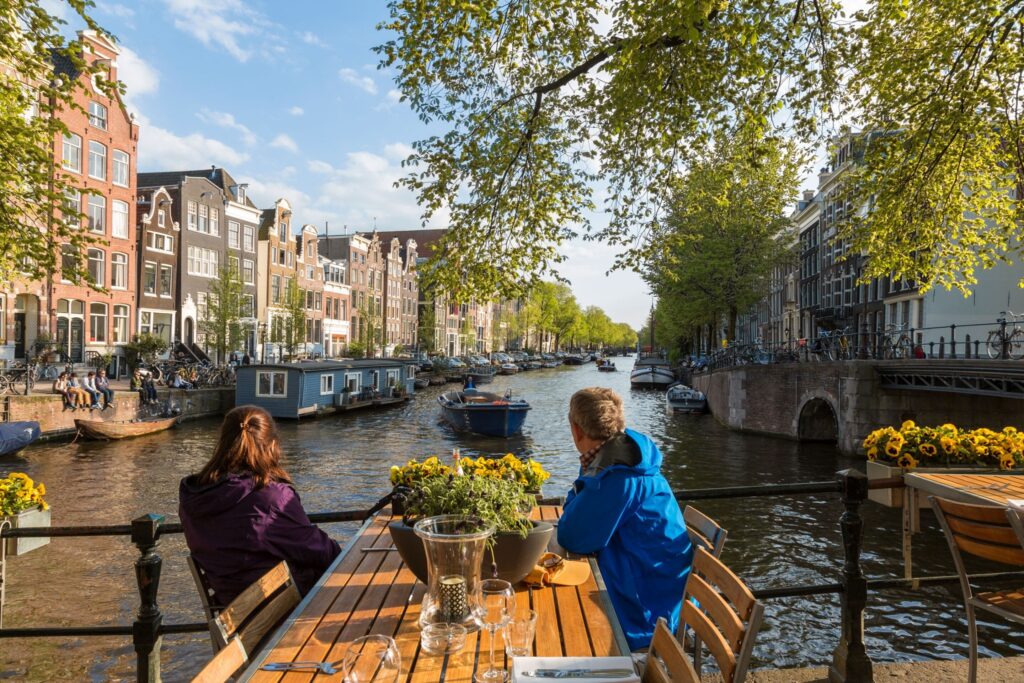
3. Experience the Anne Frank House
Step into the poignant history of World War II by visiting the Anne Frank House. Gain insight into the life of Anne Frank, a young Jewish girl who hid with her family during the Nazi occupation. The museum is located in the actual building where Anne wrote her famous diary, preserving the memory of those dark times. Be sure to book your tickets in advance, as it’s one of the most popular attractions in Amsterdam.

4. Indulge in the Local Cuisine
Amsterdam boasts a vibrant food scene, and tasting local delicacies is a must-do. Try traditional Dutch snacks such as herring, bitterballen (deep-fried meatballs), and stroopwafels (caramel-filled waffles). Explore the bustling Albert Cuyp Market to sample diverse street food, including Dutch cheeses, freshly baked stroopwafels, and mouthwatering pastries. For a unique dining experience, book a table at a “brown café” and savor hearty Dutch dishes alongside a locally brewed beer.
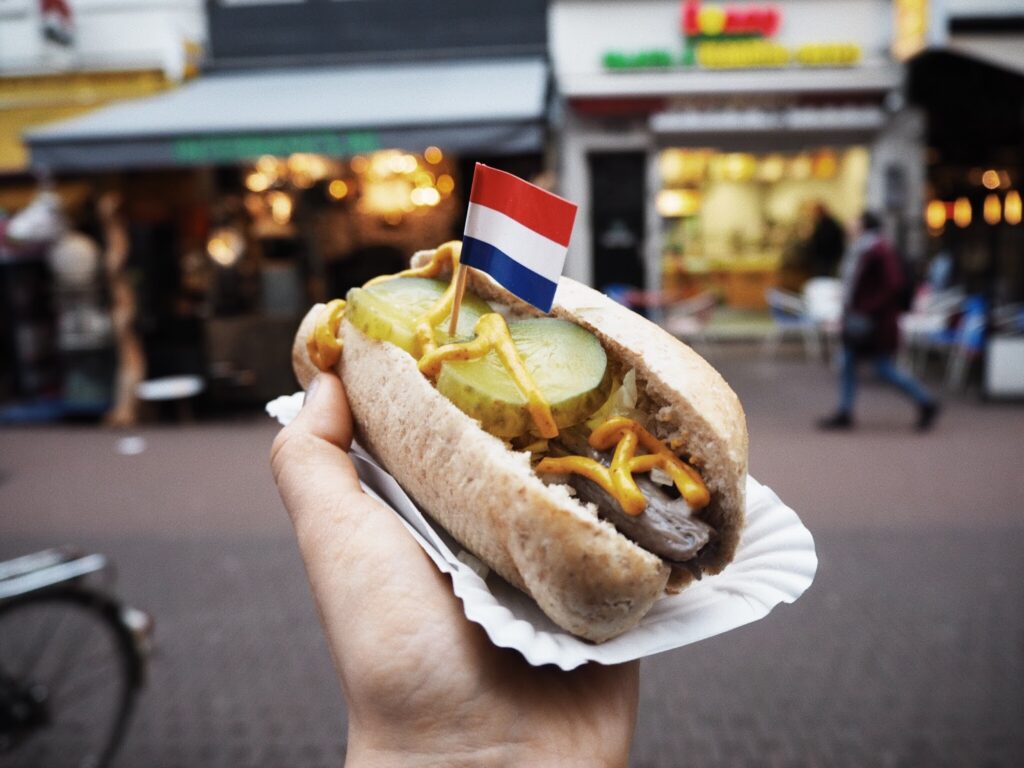
5. Visit the Vondelpark and Beyond
Escape the urban buzz and immerse yourself in nature at the serene Vondelpark, Amsterdam’s largest park. Stroll along its winding paths, rent a bike, or simply relax on the grass. If you’re a flower enthusiast, visit the Bloemenmarkt, the famous floating flower market, and admire the vibrant blooms. Additionally, take a short trip to the nearby Zaanse Schans, where you can explore traditional Dutch windmills and experience the charm of a bygone era.

6. Enjoy Nightlife and Entertainment
Amsterdam truly comes alive after dark, with a vibrant nightlife that caters to all tastes. Explore the lively neighborhood of Leidseplein, known for its bars, clubs, and live music venues. For a more alternative scene, head to the Jordaan district, which offers trendy bars and cozy cafés. Don’t miss the opportunity to witness a live performance at the Royal Concertgebouw or enjoy a comedy show at the famous Boom Chicago.
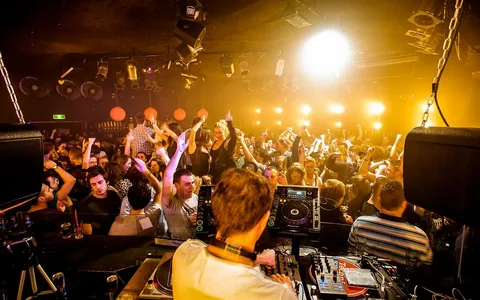
Amsterdam is a city that captivates visitors with its unique blend of history, culture, and vibrant atmosphere. From world-class museums and historic landmarks to picturesque canals and a thriving culinary scene, this Dutch capital offers an abundance of experiences for every traveler. By exploring the Museum District, wandering through the Canal Ring, visiting significant sites like the Anne Frank House, savoring local cuisine, immersing in nature, and enjoying the vibrant nightlife, you’ll uncover the true charm of Amsterdam and create memories that will last a lifetime.
Travel
Amsterdam’s Parking Prices: Tips for Budget-Friendly Parking
Published
1 year agoon
29/06/2023By
Berry Fox
How much are Amsterdam’s Parking Prices? Amsterdam, the picturesque capital city of the Netherlands, is known for its charming canals, historic architecture, and vibrant atmosphere. However, if you’re planning to explore this bustling city by car, it’s essential to be aware of the parking options and associated costs. In this article, we will delve into Amsterdam’s parking prices, offering valuable insights and tips to help you navigate the city’s parking landscape while keeping your budget in check.
Amsterdam’s Parking Prices: Tips for Budget-Friendly Parking
1. On-Street Parking:
Amsterdam provides on-street parking facilities throughout the city, but it’s important to note that rates and regulations can vary across different areas. The city is divided into zones, each with its own pricing structure. In general, parking rates in the city center tend to be higher than in the outskirts. It’s advisable to check the signage and pay attention to the color-coded parking signs, which indicate the applicable rates and restrictions for each area.

2. Paid Parking Zones:
To park in the city center and other busy areas, you will likely encounter paid parking zones. These zones are denoted by blue lines or signs with the letter “P” on a blue background. The cost of parking in these zones can range from €3 to €7 per hour, depending on the specific location and time of day. Additionally, some areas may have maximum parking durations, so be mindful of any restrictions to avoid fines.
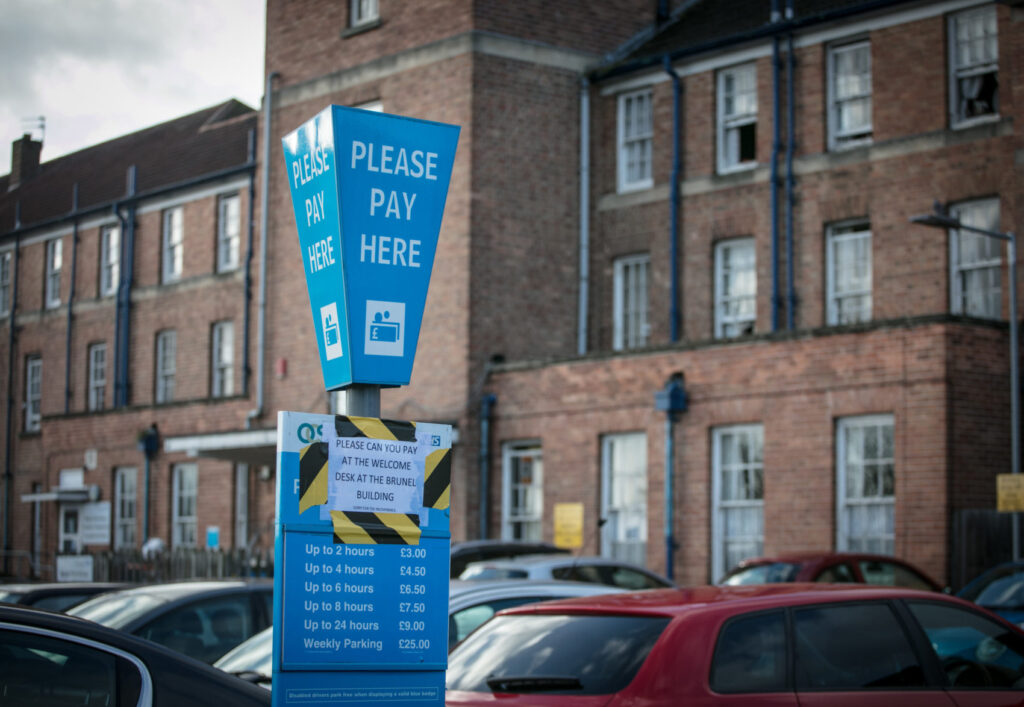
3. Parking Garages:
Amsterdam boasts a vast network of parking garages that provide a convenient alternative to on-street parking. Parking garages often offer fixed hourly rates or reduced rates for longer stays. While the rates may be higher than on-street parking, they provide the advantage of security and peace of mind. Popular parking garages can be found near major attractions, shopping districts, and transportation hubs. Utilizing these garages can save you time and provide a hassle-free parking experience.

4. P+R (Park and Ride) Facilities:
For those visiting Amsterdam and planning to drive into the city, the P+R facilities offer a cost-effective parking option. P+R facilities are strategically located on the outskirts of the city and provide affordable parking rates when combined with public transportation tickets. These facilities typically charge a flat fee of around €1 or €8 per day, depending on the location. It’s important to note that P+R rates are subject to specific rules and conditions, such as using public transport within a certain time frame.
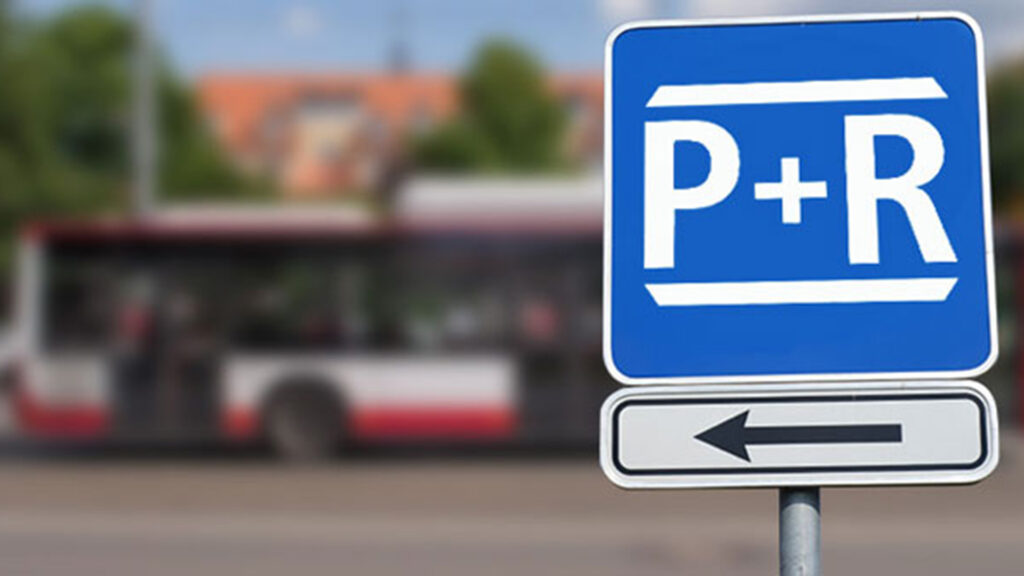
5. Mobile Parking Apps:
To streamline your parking experience in Amsterdam, consider using mobile parking apps. These apps allow you to easily find available parking spaces, compare prices, and even pay for your parking session using your smartphone. Some popular parking apps in Amsterdam include Parkmobile, Yellowbrick, and ANWB Onderweg. By using these apps, you can conveniently manage your parking needs and potentially find discounted rates or special offers.

Amsterdam’s parking prices can be challenging to navigate, especially for visitors unfamiliar with the city’s parking regulations. By understanding the various parking options, paying attention to signage, and utilizing tools like parking apps, you can make informed decisions and optimize your parking experience. Remember to plan ahead, budget for parking costs, and explore alternatives such as P+R facilities to save money while enjoying the sights and attractions of this vibrant city. With a little preparation, you can ensure a smoother and more affordable parking experience during your time in Amsterdam.
Travel
Exploring the Charms of Amsterdam on a Memorable Day Trip
Published
1 year agoon
27/06/2023By
Berry Fox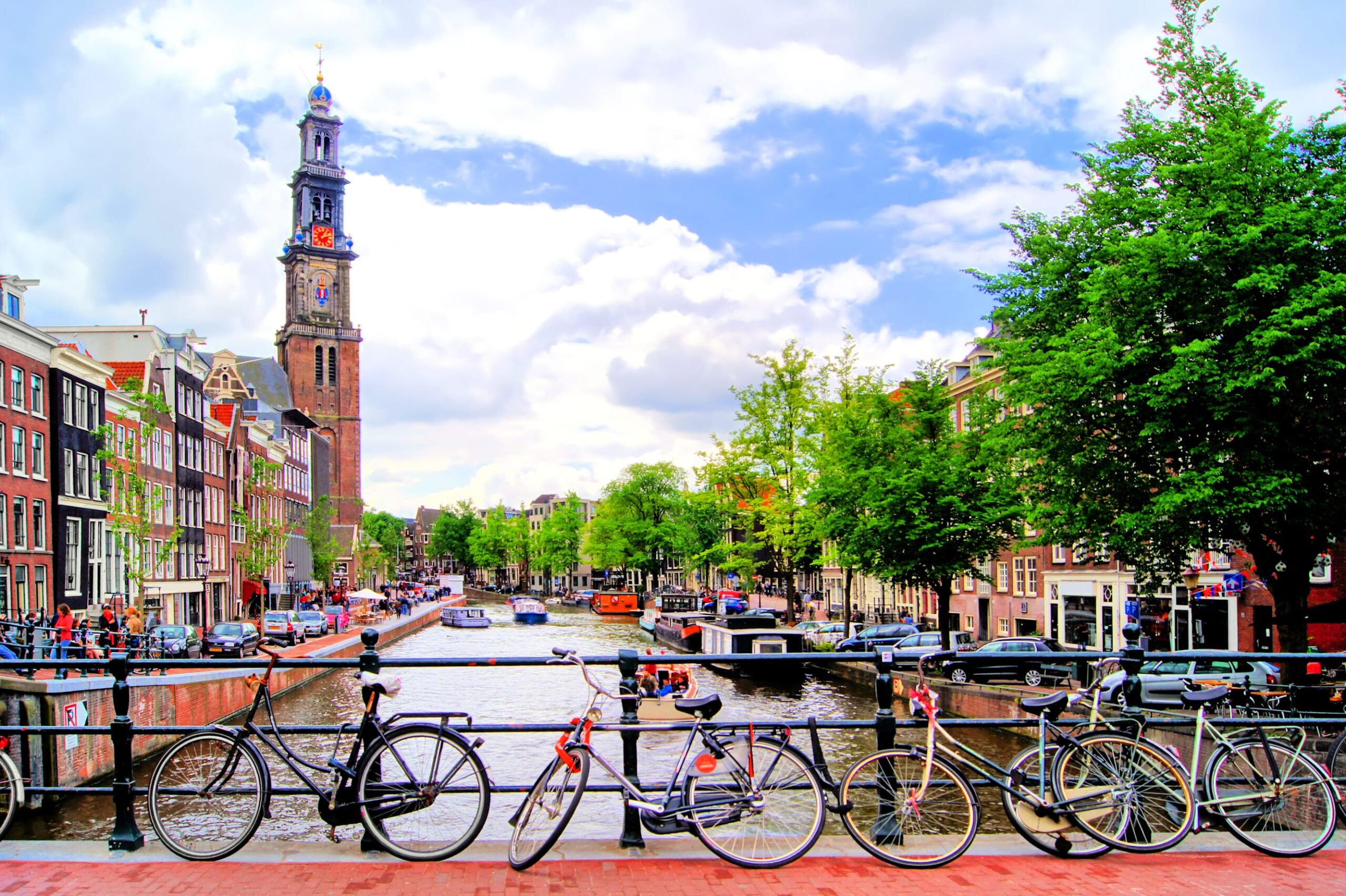
Amsterdam, the capital city of the Netherlands, is renowned for its picturesque canals, historic architecture, vibrant cultural scene, and a laid-back atmosphere that captures the hearts of travelers from around the world. While the city itself offers a multitude of attractions to explore, embarking on a day trip to Amsterdam presents a perfect opportunity to experience the essence of this charming city. Whether you’re a history buff, an art enthusiast, or simply seeking to soak in the unique Dutch ambiance, a day trip to Amsterdam is sure to leave you with unforgettable memories.
1.Canal Cruise: A Leisurely Introduction To truly appreciate the beauty and grandeur of Amsterdam, start your day trip with a relaxing canal cruise. Glide along the famous UNESCO-listed canals as you pass by elegant gabled houses, picturesque bridges, and bustling waterfronts. Absorb the enchanting scenery and gain insight into the city’s rich history and culture through informative commentary provided on most cruises. This leisurely introduction sets the stage for a day filled with exploration.

2. Historical Gems: Anne Frank House and Rijksmuseum No visit to Amsterdam would be complete without a visit to the Anne Frank House. Step into the poignant history of World War II as you enter the hiding place where Anne Frank penned her famous diary. Witness the preservation of the secret annex and immerse yourself in the personal story of the Frank family, providing a powerful reminder of the importance of tolerance and respect.

Next, head to the renowned Rijksmuseum, which houses a vast collection of Dutch art and history spanning several centuries. Marvel at masterpieces by Rembrandt, Vermeer, and other Dutch masters. The museum offers a glimpse into the nation’s cultural heritage and provides a fascinating exploration of Dutch art history.
3. Cultural Enclaves: Jordaan and Museumplein Take a stroll through the charming neighborhood of Jordaan, known for its narrow streets, picturesque canals, and quaint boutiques. Enjoy the delightful atmosphere as you explore the local shops, art galleries, and cozy cafes. Experience a taste of Dutch daily life and perhaps indulge in a traditional Dutch snack, such as a stroopwafel or herring.
Adjacent to Jordaan, visit Museumplein, a lively square home to several major museums, including the Van Gogh Museum and the Stedelijk Museum of modern and contemporary art. Admire the largest collection of Vincent van Gogh’s artworks in the world, and explore the diverse range of artistic expressions showcased in the Stedelijk Museum.
4. Vondelpark: Nature’s Oasis in the Heart of the City Escape the bustling city streets and find tranquility in Vondelpark, Amsterdam’s largest park. Nestled in the heart of the city, this lush green oasis offers a serene retreat for locals and visitors alike. Take a leisurely stroll or rent a bike to explore the park’s winding paths, picturesque ponds, and beautifully landscaped gardens. Enjoy a picnic on the grass or simply relax and soak up the peaceful ambiance.

5. Culinary Delights: Dutch Cuisine and Canalside Dining No visit to Amsterdam is complete without indulging in the city’s culinary delights. From street food to Michelin-starred restaurants, Amsterdam offers a diverse range of options to satisfy every palate. Sample traditional Dutch dishes such as bitterballen (deep-fried meatballs) or stroopwafels (syrup-filled waffles) at local food stalls or venture into a charming canalside restaurant for a leisurely lunch or dinner, accompanied by beautiful canal views.
A day trip to Amsterdam is a fantastic way to immerse yourself in the city’s rich history, art, and culture. From exploring the poignant Anne Frank House to admiring world-class art at the Rijksmuseum, and from strolling through charming neighborhoods to finding solace in the peaceful Vondelpark, Amsterdam offers an array of experiences that will leave you captivated. So, pack your curiosity and embark on a memorable day trip to discover the captivating charm of Amsterdam.
Travel
Discover the Best Swimming Spots in the Netherlands
Published
1 year agoon
25/06/2023By
Berry Fox
The Netherlands, known for its picturesque canals, windmills, and tulip fields, also offers a variety of delightful swimming spots. Despite being a relatively small country, the Netherlands boasts numerous lakes, rivers, and coastal areas that provide excellent opportunities for a refreshing swim. In this article, we will explore some of the best places to swim in the Netherlands, offering a mix of natural beauty and tranquil surroundings.
Discover the Best Swimming Spots in the Netherlands
1. Zandvoort Beach
Located just a short distance from Amsterdam, Zandvoort Beach is one of the most popular coastal destinations for locals and tourists alike. With its wide stretch of sandy shore, clear blue waters, and lively beach clubs, Zandvoort offers the perfect combination of relaxation and entertainment. Take a dip in the North Sea, bask in the sun, and enjoy beachside amenities, making it an ideal spot for a day trip or a weekend getaway.
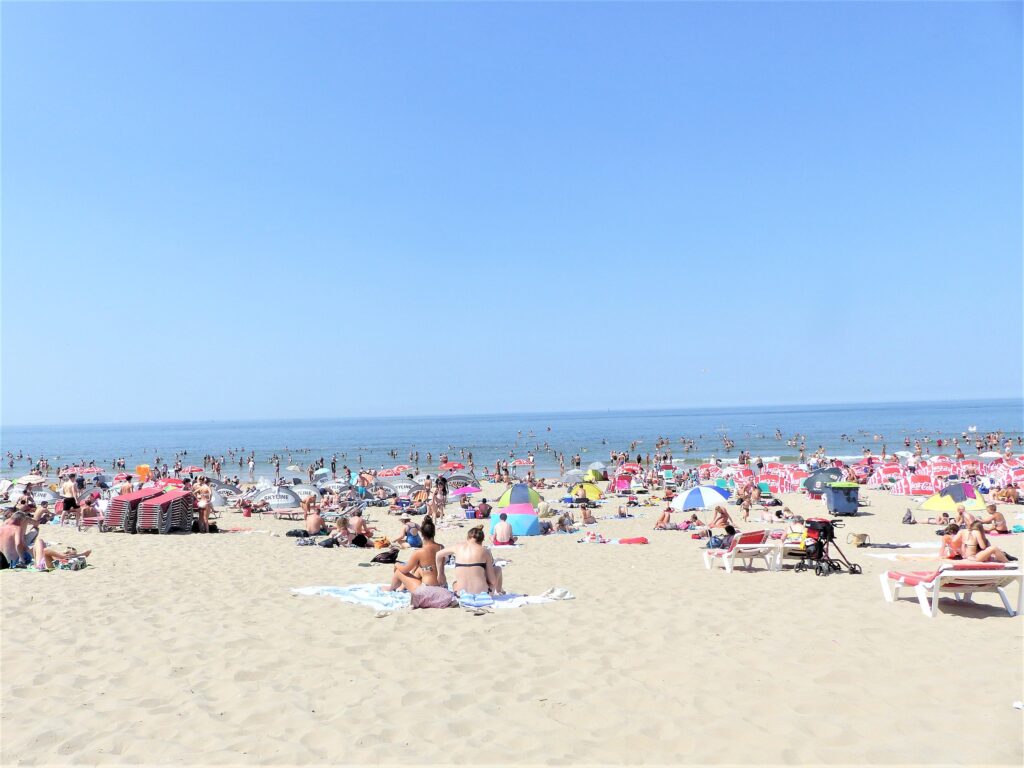
2. Henschotermeer
For those looking to escape the bustling cities, Henschotermeer is a hidden gem located near the town of Woudenberg in the Utrechtse Heuvelrug National Park. This pristine lake, encompassed by dense forests and rolling hills, provides a serene environment for swimming enthusiasts. The crystal-clear waters and sandy beaches create a postcard-worthy setting, perfect for unwinding and immersing oneself in nature.

3. Binnenschelde
Situated in the province of Zeeland, Binnenschelde is an artificial lake created from a former sand extraction site. Today, it has transformed into a vibrant recreational area offering a range of water activities, including swimming, windsurfing, and sailing. The lake’s clean waters, complemented by its landscaped beaches and lush greenery, make Binnenschelde a fantastic spot for water sports enthusiasts and families alike.
4. The Vinkeveense Plassen
Located in the province of Utrecht, the Vinkeveense Plassen is a network of interconnected lakes, making it an aquatic paradise. Known for its clear waters and diverse marine life, this area is particularly popular among scuba divers and snorkelers. However, visitors can also enjoy swimming in designated areas while taking in the scenic beauty of the surrounding reed beds and picturesque islands.

5. Veluwemeer
Nestled in the heart of the Netherlands, Veluwemeer is a large lake situated between the provinces of Gelderland and Flevoland. Its extensive coastline, dotted with sandy beaches and lush green areas, offers an inviting atmosphere for swimming, sunbathing, and picnicking. The lake’s calm waters are well-suited for families and those seeking a peaceful retreat amidst stunning natural surroundings.

The Netherlands may not be the first country that comes to mind when thinking about swimming destinations, but it offers a surprising array of enchanting spots for aquatic enthusiasts. From sandy beaches along the coast to serene lakes nestled in idyllic settings, the country has something to suit every swimmer’s taste. Whether you seek a refreshing dip or a relaxing day in nature, these swimming spots in the Netherlands are sure to provide a memorable experience for visitors and locals alike. So, pack your swimsuit and dive into the tranquil waters of the Netherlands for an unforgettable aquatic adventure.
Travel
Exploring Amsterdam: A Guide to Must-Do Activities and Attractions
Published
1 year agoon
15/06/2023By
Berry Fox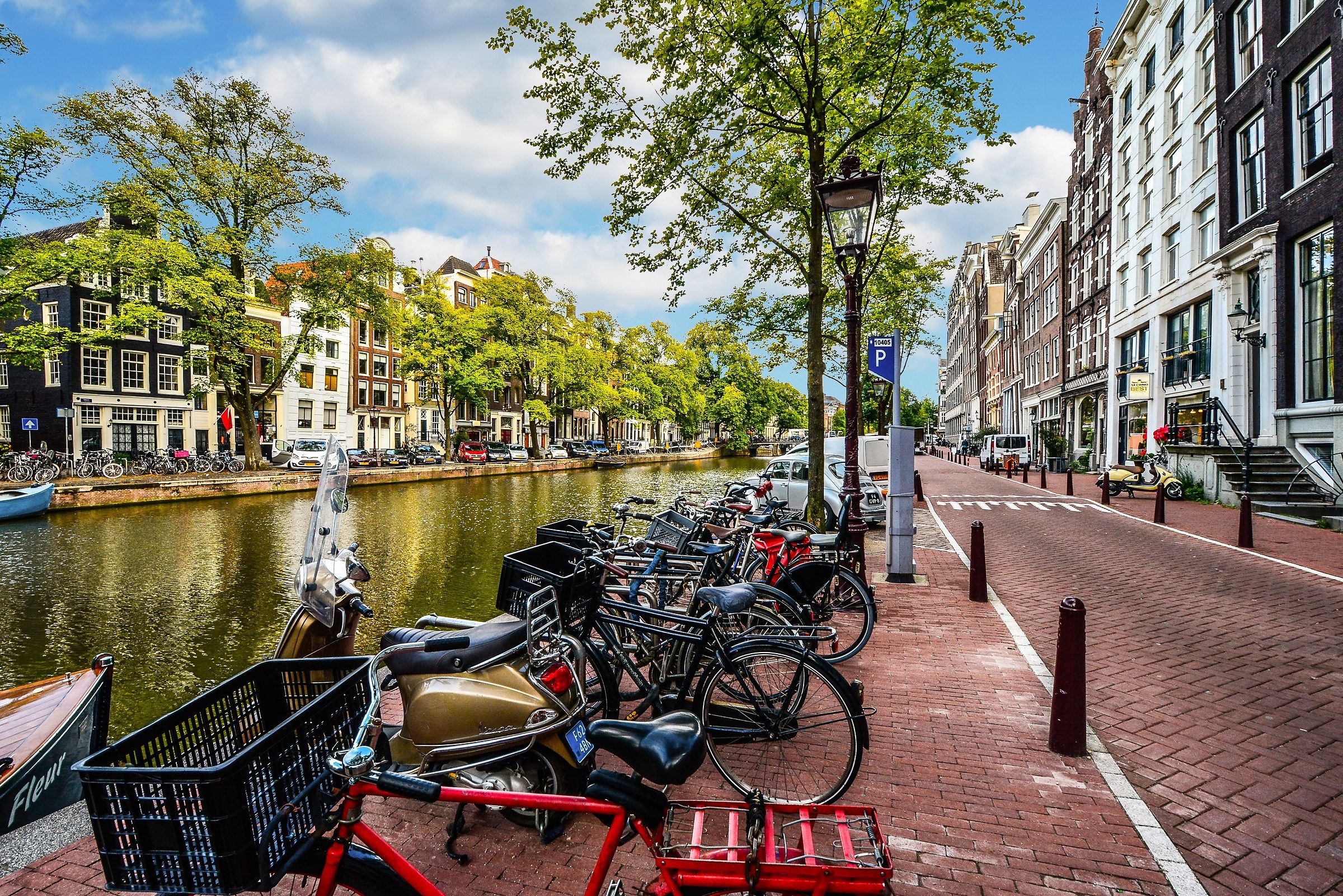
Amsterdam, the capital city of the Netherlands, is a vibrant and diverse destination that offers a plethora of activities and attractions to suit every traveler’s interests. From its enchanting canals and historic architecture to its world-class museums and vibrant nightlife, Amsterdam is a city that truly has something for everyone. Whether you’re a history buff, an art enthusiast, a foodie, or simply someone looking to soak up the unique atmosphere, here’s a guide to the top things to do and see in Amsterdam.
What things to do in Amsterdam?
1. Cruise the Picturesque Canals
One of the best ways to experience the charm of Amsterdam is by taking a canal cruise. Hop on a boat and navigate the UNESCO-listed canals, marveling at the elegant canal houses, quaint bridges, and picturesque views. You can choose from various types of cruises, including hop-on-hop-off options, romantic candlelit tours, or even guided tours that provide insight into the city’s history and architecture.

2. Visit the Van Gogh Museum
Art enthusiasts cannot miss the opportunity to visit the renowned Van Gogh Museum. This world-class institution houses the largest collection of works by the legendary Dutch artist, Vincent van Gogh. Immerse yourself in his masterpieces, including “The Starry Night” and “Sunflowers,” and gain a deeper understanding of the artist’s life and artistic journey through the museum’s comprehensive exhibitions.
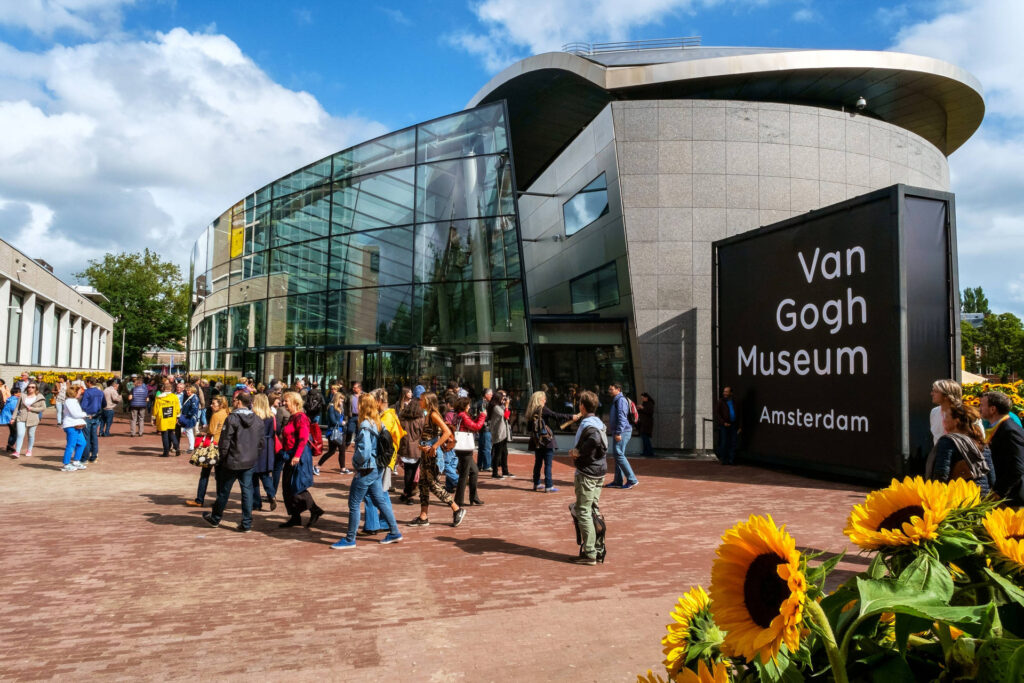
3. Explore the Anne Frank House
For a poignant and thought-provoking experience, visit the Anne Frank House. Step into the secret annex where Anne Frank and her family hid during World War II, and gain insight into their extraordinary story through exhibits and personal artifacts. The museum serves as a powerful reminder of the impact of intolerance and the importance of human rights.

4. Discover the Historic City Center
Amsterdam’s historic city center, known as the Canal Ring, is a UNESCO World Heritage site and a treasure trove of architectural wonders. Take a leisurely stroll or rent a bike to explore the narrow streets, charming squares, and beautiful buildings. Don’t miss the iconic Dam Square, home to the Royal Palace, or the bustling market at the Bloemenmarkt, where you can find a stunning array of flowers.
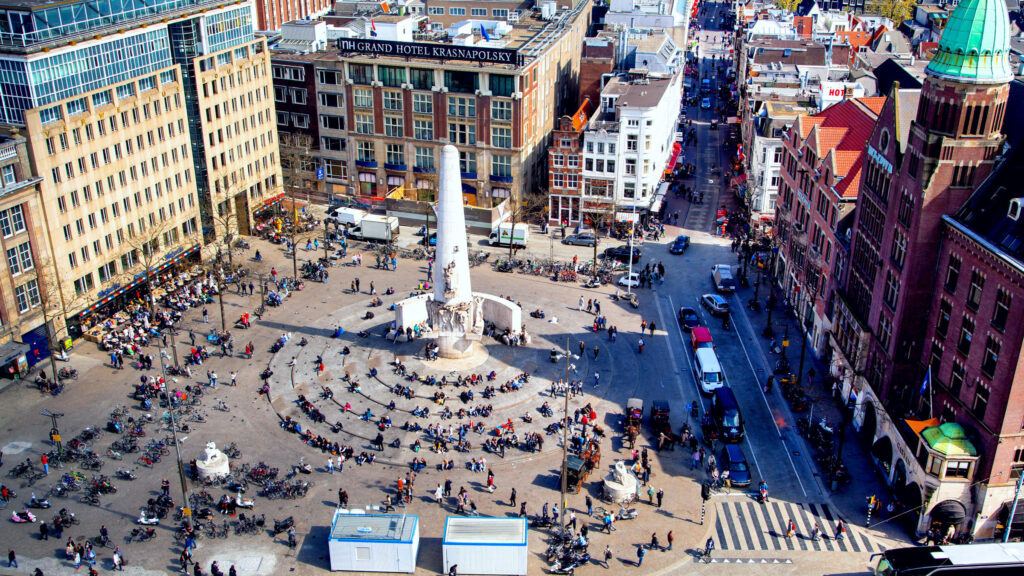
5. Indulge in Dutch Cuisine
Amsterdam is a food lover’s paradise, offering a wide range of culinary delights. Sample traditional Dutch treats such as stroopwafels (caramel-filled waffles) and herring from street vendors. For a unique dining experience, try rijsttafel, a colonial Indonesian feast featuring a variety of small dishes. Additionally, explore the city’s thriving food scene with its numerous cafes, restaurants, and trendy food markets.
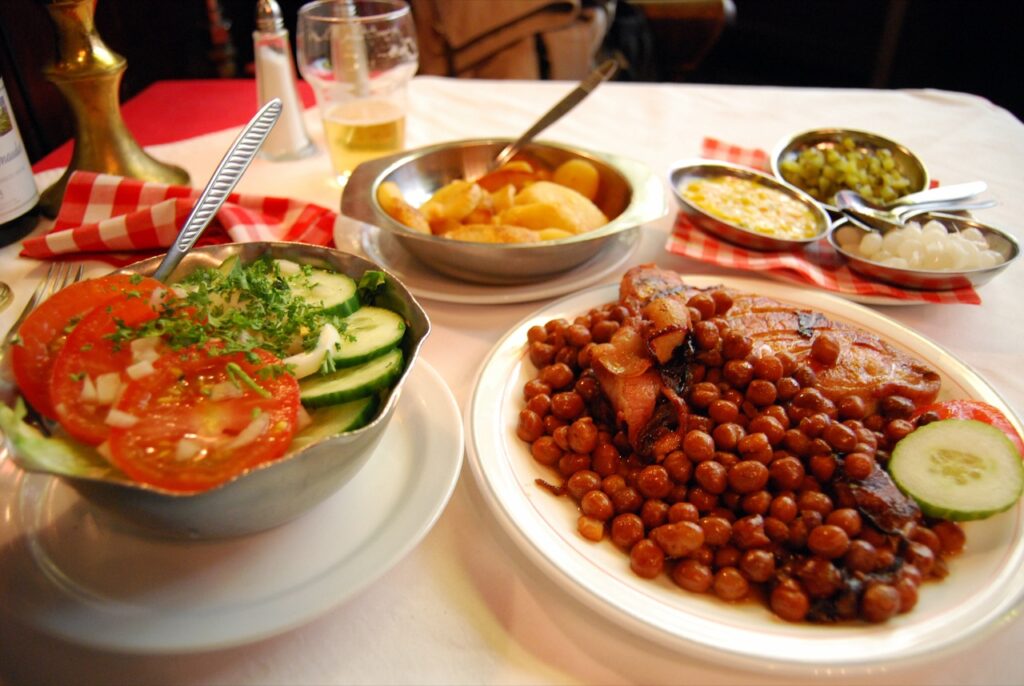
6. Immerse Yourself in Art at the Rijksmuseum
Another must-visit museum in Amsterdam is the Rijksmuseum, which houses an extensive collection of Dutch art and history. Admire masterpieces by the likes of Rembrandt, Vermeer, and Frans Hals, among others. The museum’s highlights include Rembrandt’s “The Night Watch” and the exquisite collection of Delftware ceramics.

7. Enjoy the Vibrant Nightlife
As the sun sets, Amsterdam’s vibrant nightlife comes alive. From lively bars and cozy pubs to trendy nightclubs, the city offers entertainment options for all tastes. Visit the popular Leidseplein or Rembrandtplein squares, which are lined with bars and clubs, or explore the trendy Jordaan neighborhood, known for its eclectic mix of venues.

8. Visit the Keukenhof Gardens (Seasonal)
If you’re visiting Amsterdam during spring (mid-March to mid-May), a visit to the nearby Keuken
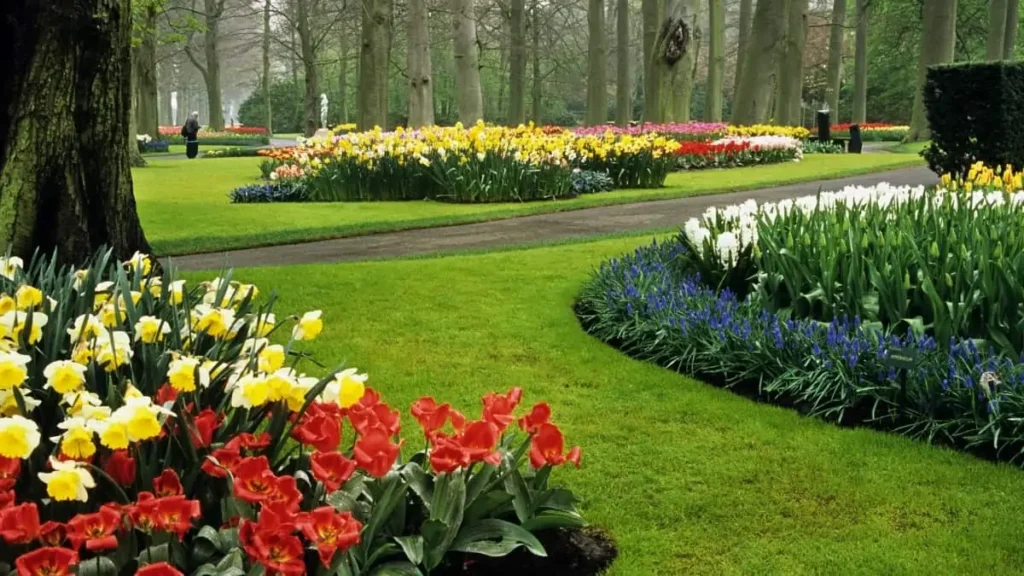
Travel
Amsterdam Weather: A Delightful Blend of Seasons
Published
1 year agoon
14/06/2023By
Berry Fox
Amsterdam, the vibrant capital city of the Netherlands, is known for its rich history, picturesque canals, and diverse culture. One of the aspects that adds to the charm of this beautiful city is its ever-changing weather. From misty mornings along the canals to sunny afternoons in the parks, Amsterdam offers a delightful blend of seasons throughout the year. In this article, we will explore the different seasons and weather patterns that grace the streets of Amsterdam.
Spring: Awakening from Winter’s Embrace
As winter fades away, Amsterdam comes alive with the vibrant colors of spring. From March to May, the city experiences a refreshing change in weather, with average temperatures ranging from 8 to 15 degrees Celsius (46 to 59 degrees Fahrenheit). While mornings and evenings may still be chilly, the afternoons witness a gradual increase in warmth. Spring showers are common, so it’s wise to carry an umbrella or raincoat while exploring the city’s beautiful parks, such as Vondelpark or Keukenhof Gardens, where blooming tulips create a mesmerizing spectacle.
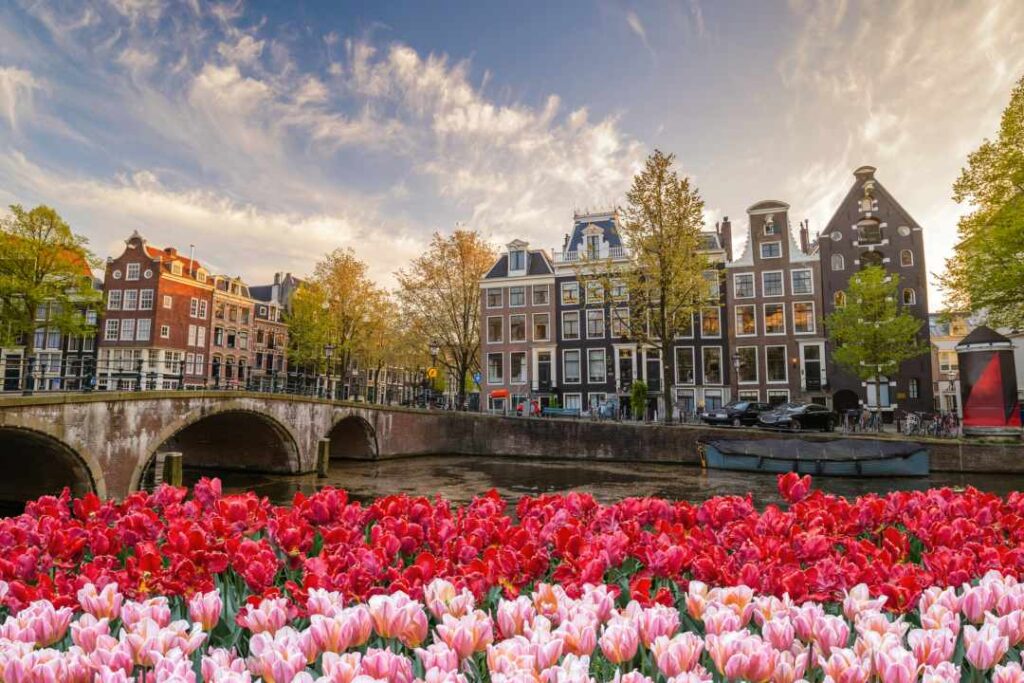
Summer: Sunny Days and Festive Vibes
Summer in Amsterdam is a joyous time, with long days filled with sunshine and an array of festivals and outdoor activities. From June to August, temperatures range from 15 to 25 degrees Celsius (59 to 77 degrees Fahrenheit), making it ideal for exploring the city’s famous museums, strolling along the canals, or simply relaxing in one of the many outdoor cafes. The warm weather invites locals and tourists alike to enjoy boat tours along the canals or picnics in parks like Westerpark or Oosterpark. It’s important to note that summer rainfall is not uncommon, so packing a light jacket or umbrella is still a good idea.

Autumn: A Tapestry of Colors
Autumn paints Amsterdam in a stunning tapestry of colors, as the leaves turn golden and the city prepares for a cooler season. From September to November, temperatures range from 10 to 15 degrees Celsius (50 to 59 degrees Fahrenheit). As the days gradually become shorter, Amsterdam experiences more rain showers and cooler breezes. Nevertheless, the city remains captivating, with its historical buildings reflected in puddles and cozy cafes offering warm drinks to combat the chill. The autumnal charm is best enjoyed by taking a leisurely stroll through the Jordaan neighborhood or exploring the nearby countryside, such as Zaanse Schans or the beautiful Amsterdamse Bos.

Winter: A Winter Wonderland
Amsterdam transforms into a winter wonderland during the colder months. From December to February, temperatures range from 0 to 8 degrees Celsius (32 to 46 degrees Fahrenheit), and the city often experiences snowfall, creating a picturesque scene. The canals freeze over, and locals and visitors eagerly lace up their ice skates for a quintessential Dutch experience. The festive season brings a delightful atmosphere, with Christmas markets, ice sculptures, and cozy cafes serving warm beverages and delicious Dutch treats like oliebollen. The city’s museums and galleries also provide a haven for indoor exploration during this season.
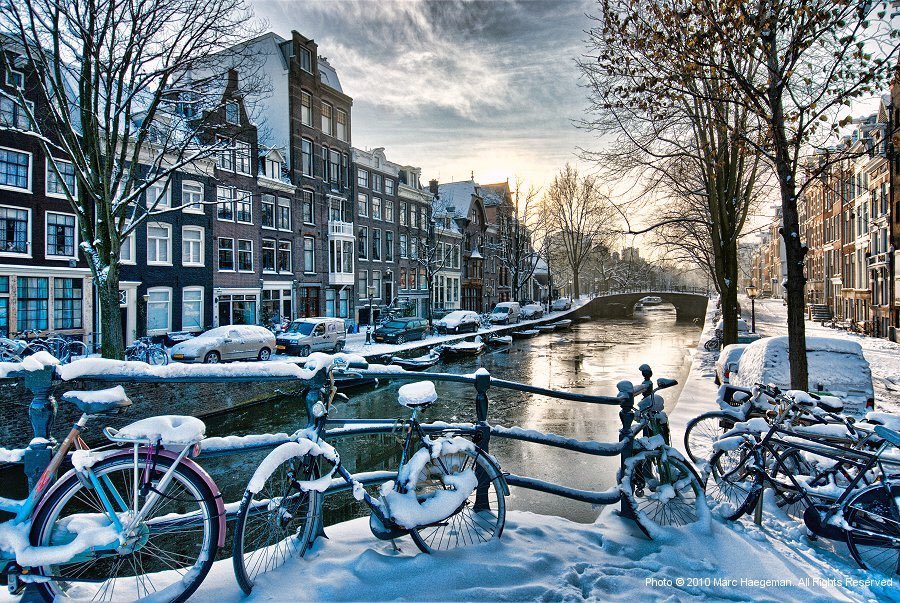
Amsterdam’s weather showcases a unique blend of seasons, each offering its own distinct charm and opportunities for exploration. Whether you’re admiring the blooming tulips in spring, basking in the sunshine during summer, marveling at the autumn foliage, or experiencing a winter wonderland, Amsterdam’s weather adds to the city’s allure. So, no matter the time of year, be prepared for changing conditions and embrace the beauty that each season brings while enjoying all that Amsterdam has to offer.

Best Outdoor Activities in Amsterdam | Natural and Cultural Wonders

Major disruption in train services between Rotterdam and Den Haag until December

More than 800 film producers and actors in the Netherlands call for sanctions against Israel

Scientists warn: Ultra-processed food is as addictive as cigarettes

The price of a pack of cigarettes in Belgium will be 10 euros

There will also be an increase in the consumption tax on soft drinks in the Netherlands

Wanted murder suspect Bretty Dorder in the Netherlands was caught!

Fighting dog feces: Tracing feces with DNA

Ajax – Feyenoord: 0-4 (MATCH RESULT)

Armed attack in Rotterdam, Netherlands: 3 dead

Home Ownership Rate Declines in European Union Countries

Van Gogh’s stolen painting was found after 3.5 years

Pakistani cricketer who put a bounty on Geert Wilders’ head gets 12 years in prison

Fossil fuel protest in the Netherlands on the second day: 500 activists detained

Ajax-Feyenoord derby canceled due to incidents

Bicycles in Amsterdam: The Art of Commuting

Amsterdam’s Cycling Culture: A Lifestyle to Embrace

Amsterdam’s Bike-Friendly Neighborhoods

The Wheel Revolution: How Amsterdam’s Bicycles Reshaped the Cityscape

How to eat cheap food in Amsterdam?

Arts and Entertainment: Amsterdam Guide 2023

Heartbeat of Amsterdam: Exploring the Iconic Bicycles

How to Rent a Bike in Amsterdam

Billboards of OnlyFans model spark controversy in UK

Dutch Supreme Court: Israeli soldiers cannot be tried in our country

Amsterdam fine for loud car engines and exhausts

Verstappen equals F1 record

Exploring Amsterdam’s Best Laptop-Friendly Cafés for Digital Nomads

How Netherlands Emergency system works?

2 Russian warplanes approaching Dutch airspace intercepted

In another city in the Netherlands, a bacteria warning was issued in drinking water

Warning from TK Maxx in the Netherlands: Electric leakage in the adapters!

Rising rents in the Netherlands led citizens to Belgium

Children’s bicycle helmets are recalled for safety reasons in the Netherlands

Train tickets increase by 6.6 percent in the Netherlands

Mother and son missing for 2 months in the Netherlands still not found

The sweltering heat is coming in the Netherlands

‘Netherlands’ Stonehenge’ Discovered: 4000-Year-Old Graveyard and Glass Beads From Mesopotamia Found

Large cruise ships banned in Amsterdam seeking to reduce tourist numbers





